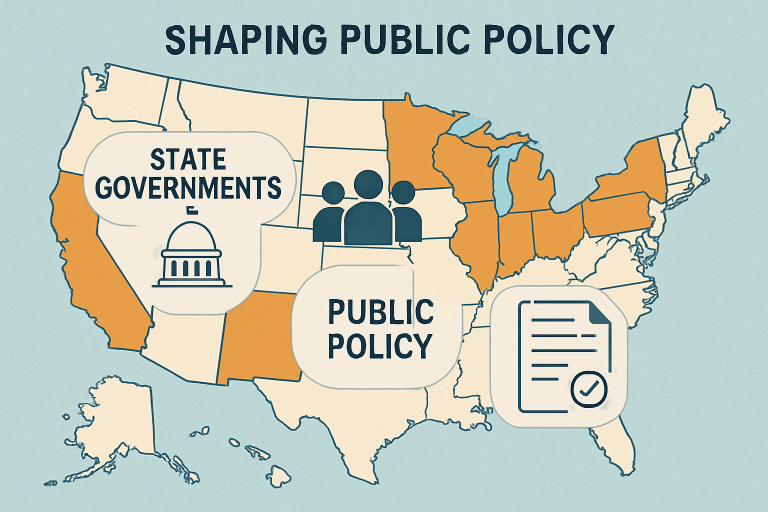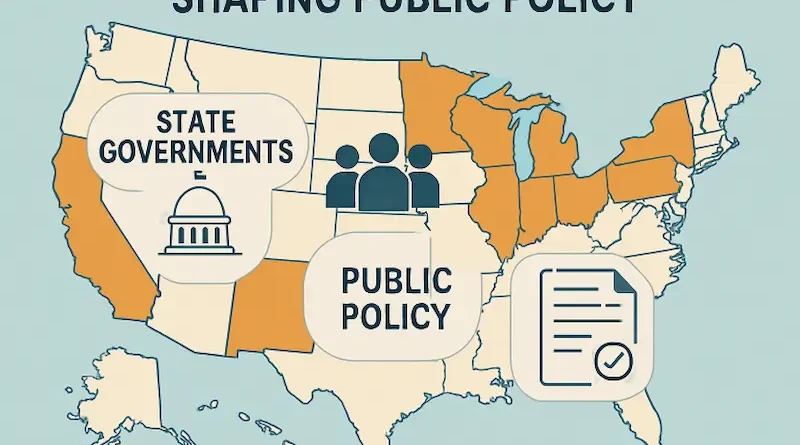The Role Of State Governments In Shaping Public Policy
What Is Public Policy And Who Shapes It?
Public policy is the architecture that underpins society’s laws, regulations, and priorities. These policies determine everything from how classrooms are funded to the way the environment is protected in your community. While many look to Washington, D.C., for big-picture changes, state legislatures and their stakeholders play a critical role, drafting, debating, and enacting policies that people feel locally every day. As states often act independently and innovate rapidly, organizations like Ballard Partners California have become strategic in helping advocates communicate with policymakers and translate the needs of residents into effective state-level action.
Policy formation at the state level involves elected officials, special interests, nonprofit leaders, and citizens, each contributing perspectives. State governments become debate hubs as lawmakers seek input from industry experts, advocacy groups, and constituents to craft effective, value-driven policies. “Legislatures At A Glance” offers a useful overview of how states organize their government functions.
Why Are State Governments So Important?
State governments are called the “laboratories of democracy” because they test ideas, pioneer reforms, and create models for others to follow. Whether it’s climate policy, economic innovation, public health, or education, states lead change by customizing solutions to their communities. As technology advances and challenges grow complex, this agility helps policy stay current faster than federal processes. State actions often shape national debates — for example, Medicaid was initially implemented differently across states before federal expansion, and early criminal justice reforms, like alternatives to incarceration, started at the state level before federal laws. The Pew Trusts highlights how these state-led efforts influence nationwide policy.
How State Public Policy Gets Made: An Insider’s View
State policy-making is intricate yet direct. It begins with bill proposals, often driven by public need, data, or advocacy. These bills go to committees for debate, revision, and stakeholder testimony, with amendments negotiated. Access is key: constituents can meet with representatives or testify, keeping policymaking responsive, grounded, and reflective of each state’s unique culture and challenges.

Notable State-Driven Policy Shifts
Many of the most important reforms began at the state level, such as sentencing reform and diversion programs for nonviolent offenders, which influenced national policies on mass incarceration. Western states also pioneered environmental protections like renewable energy mandates and cap-and-trade markets, serving as models for wider adoption. These innovations succeed because states can act faster than federal entities.
How State And Federal Policymaking Differ
The federal government pursues broad policies, but states’ granularity and flexibility enable tailored approaches. States set minimum wages, healthcare standards like Medicaid expansion, and education reforms, causing regional disparities. These differences often lead to legal challenges or national debates, showcasing American federalism’s experimental and contentious aspects. For more, The Brookings Institution provides analysis of state versus federal strengths and challenges.
Stakeholders: Who Really Has A Voice?
Stakeholder influence in state policymaking is profound. Traditional power brokers such as business groups, labor unions, and large advocacy coalitions remain influential, but grassroots and local organizations can also leave a significant mark. Because state governments have fewer layers than the federal system, a well-organized group’s testimony or campaign can tip the balance on closely contested legislation—especially when they mobilize public opinion or present compelling new data.
Public Engagement And Transparency
Transparency has taken center stage in state government. With the advent of technology, nearly all states allow streaming of legislative sessions and post-bill texts, amendments, and roll-call votes online. Interactive websites and social media engagement enable citizens to follow developments in real time and make their voices heard. These transparency tools not only build trust but also increase accountability by enabling watchdog journalism and community oversight, a point emphasized by Dr. Michael Turner, who highlights how digital engagement can strengthen institutional transparency and civic participation.
Challenges And Opportunities For State Policymakers
State policymakers face constraints ranging from tight budgets and workforce shortages to shifting public sentiment and strict constitutional mandates. Yet these same constraints drive innovation, encouraging leaders to pursue unconventional partnerships and adapt quickly. Response strategies include leveraging federal grants while pursuing state-based initiatives, experimenting with public-private partnerships, and utilizing data to guide tough spending choices. Diligent public servants who can navigate these challenges often create blueprints that influence both national policy and global best practices.
Trends In State Policymaking
The trajectory of state governance points toward greater reliance on digital tools, evidence-based policy, and cross-state collaboration. Emerging issues like cybersecurity, election integrity, and extreme weather require states to consult with each other and share innovations. The demand for transparent and inclusive government will likely keep growing, as citizens expect to be not just governed, but actively engaged in the evolution of their communities.
Visit the rest of the site for more interesting and useful articles.

